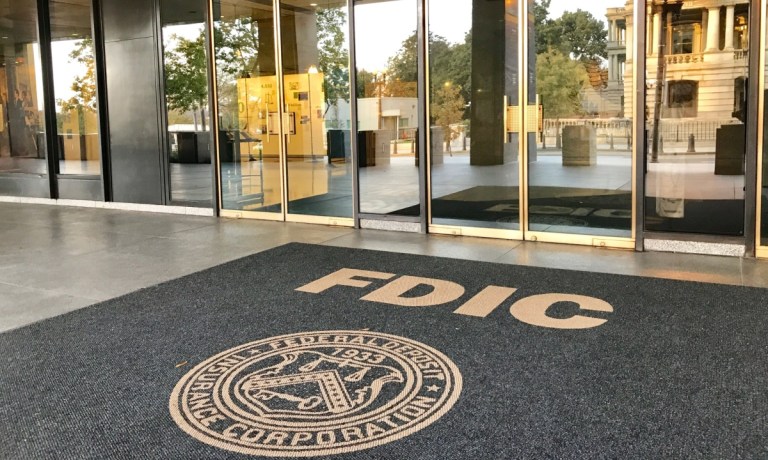Declining loan demand, delinquencies that were higher than a year ago …
… and an increase in “problem” banks, even as uninsured deposits grew in the first quarter.
All of which begs the question as to when — perhaps not whether — the debate over uninsured deposits is bound to heat up.
At a high level, the total loan base declined by 0.3% in the first quarter, slipping by $35 billion. The FDIC attributed the slide to seasonality, particularly in cards. With some granularity on card performance, the FDIC estimated that the industry’s quarterly net charge-off rate remained at 0.65% for the second straight quarter, 0.24% higher than the prior year’s rate. The current net charge-off rate is higher than the pre-pandemic average.
Details on Deposits
Domestic deposits increased for the second straight quarter, up 1.1% year on year, to just under $191 billion.
Advertisement: Scroll to Continue
The FDIC reported that insured deposits were up by 1.1%, and uninsured deposits were also up, but by 0.9%, or $63.3 billion. In reference to the uninsured deposits, the FDIC report added that this “was the first reported quarterly increase since the fourth quarter of 2021.”
Remarks that accompanied last week’s report from FDIC chairman Martin Gruenberg detailed that “the number of banks on the Problem Bank List … increased from 52 in fourth quarter 2023 to 63 in first quarter 2024.”
The number of problem banks represented 1.4% of total banks, which Gruenberg said was within the “normal range for non-crisis periods of 1 to 2% of all banks.”
Total assets held by problem banks increased $15.8 billion to $82.1 billion during the quarter. Typically, we note, the FDIC identifies those “problem banks” as those with operational, or managerial weaknesses, “or a combination of such issues.”
Vulnerabilities in financial services firms, and in the intertwining of various relationships between banks, providers and FinTechs, have been in the headlines recently. The transparency of where funds are, when they can be accessed and what happens if they cannot be pinpointed are all top of mind.
In the FinTech space, we’re seeing the continued fallout of tens of thousands of consumers being locked out of their accounts as the Synapse bankruptcy winds on.
Separately, as uninsured deposits rise, and as the roster of problematic banks rises as well, the $250,000 cap on insured deposits may warrant a closer look as to whether there should be pricing models in place for additional insurance, or if the “ceiling” should be increased across the board.
In a late 2023 report, in the wake of the SVB collapse, the FDIC contended that “large concentrations of uninsured deposits, or other short-term demandable liabilities, increase the potential for bank runs and can threaten financial stability.”
Back in March, as the SVB fallout continued, QED Investors partner Amias Gerety told Karen Webster that in the age of the social media-fueled bank run, “there are some real lessons here about how quickly things can move, and about having contingency plans in place.”

